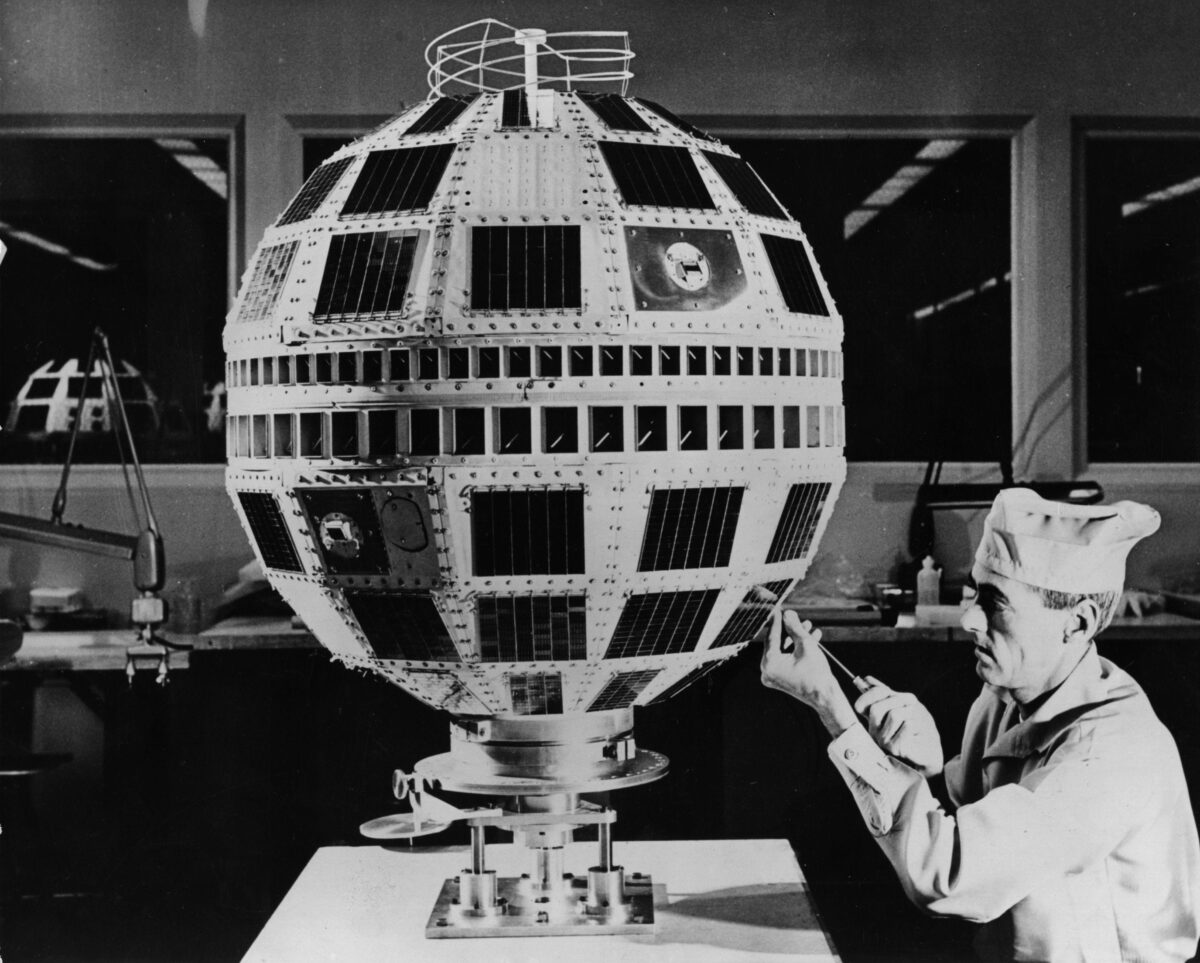Satellite nervous systems

The theorist Marshall McLuhan reflects on the potential political impacts of the satellite Telstar as ‘extensions of our nervous system’ in the 1964 book Understanding Media.
At this moment, for example, we are quite in the dark about the political implications of Telstar. By outering these satellites as extensions of our nervous system, there is an automatic response in all the organs of the body politic of mankind. Such new intensity of proximity imposed by Telstar calls for radical rearrangement of all organs in order to maintain staying power and equilibrium. The teaching and learning process for every child will be affected sooner rather than later. The time factor in every decision of business and finance will acquire new patterns. Among the peoples of the world strange new vortices of power will appear unexpectedly.
Marshall McLuhan, ‘Roads and Paper Routes’ in Understanding Media (1964)
Later in the same text, McLuhan critiques approaches he sees as ‘typical of the man of print culture’ that overlook the effects of this new medium:
A few months ago John Crosby wrote to the New York Herald Tribune from Paris in a way that well illustrates why the “content” obsession of the man of print culture makes it difficult for him to notice any facts about the form of a new medium:
“Telstar, as you know, is that complicated ball that whirls through space, transmitting television broadcasts, telephone messages, and everything except common sense. When it was first cast aloft, trumpets sounded. Continents would share each other’s intellectual pleasures. Americans would enjoy Brigitte Bardot. Europeans would partake of the heady intellectual stimulation of “Ben Casey.” . . . The fundamental flaw in this communications miracle is the same one that has bugged every communications miracle since they started carving hieroglyphics on stone tablets. What do you say on it?”‘
Shared by Dr Niall Gallen, EDACS